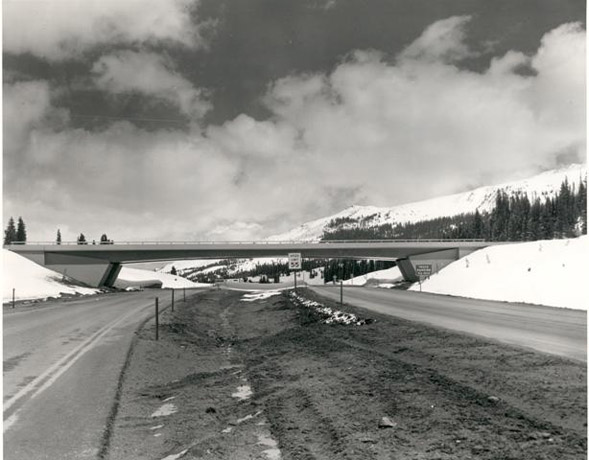
Courtesy Colorado Department of Transportation dot.state.co.us
Would you pay higher taxes to solve our I-70 problem? Vote your mind on our homepage
July 10, 2008 —
When Dwight D. Eisenhower instigated the Federal Interstate System in the 1930s, he could hardly have projected that I-70 would become insufficient to handle the number of travelers crossing the Continental Divide.
I don’t know if Eisenhower was a skier or not, but perhaps, if he were, he would have known the sport’s allure, and its power to raise the economy of the central Rockies to new heights, bringing with it expansion, jobs, new communities, and, of course, traffic.
This traffic has combined with the forces of weather and nature to make sections of I-70 between Vail and Denver ride about as smoothly as the two-track lane to Old Homestake. Asphalt has proved relatively feeble when toyed with by the geologic forces of the Rockies, and Department of Transportation crews are constantly repairing the road during our all-too-brief warmer seasons.
Highways were deemed necessary by the Eisenhower administration for the purposes of defense and, of course, commerce. That’s part of the reason that the Glenwood Canyon portion of I-70, which took twelve years and $490.3 million, was funded almost entirely by the Federal Government (90 percent). That’s a drop in the bucket compared to the $8 billion I-95, the $7.5 billion I-90, or the $5.1 billion I-95. In fact, I-70 doesn’t even rank in the top five most expensive highways in the nation, despite that it’s the fifth-longest.
So how about a light rail? Or, beyond that, how about any kind of rail system?
The estimates I’ve seen for a rail system from Denver to Eagle are high, somewhere above the $4.4 billion mark. For a project serving a relatively small number of people, that seems a high price to pay. Even if we do add a rail system, our it doesn't change the fact that I-70 is in constantly in need of upgrade, repair, and possible expansion.
If you figure that a rail system would cost $4 billion (a low number at best), and add the cost of maintaining a major highway in the rugged Rockies, you get one huge, huge bill.
So who’s going to pay for it?
The Federal Government subsidizes about 90 percent of Interstate roads nationwide, so I’d hope our representatives in Washington have the gumption to get the same deal for us.
In the meantime, rather than jumping straight toward the idea of higher taxes, it’s worth looking at private funding.
Consider the idea that there is likely a European train company somwhere with the expertise to build in the mountains, which can also find a capitalistic way to make a train system work. Charge people an appropriate amount to ride the train, and make an investment that would pay off over time.
As the debate continues over rail v. highway expansion, a capatalistic rail system is worth considering.
Only if it proves impossible should we consider raising taxes. In the meantime, I think it’s wise we look up the country code for Switzlerland and do a google search for “European train company.”
* Sources for this blog: Federal Highway Administration, MESalek.com.
![]() Comment on "Would you pay higher taxes to solve our I-70 problem? Vote your mind on our homepage" using the form below
Comment on "Would you pay higher taxes to solve our I-70 problem? Vote your mind on our homepage" using the form below












